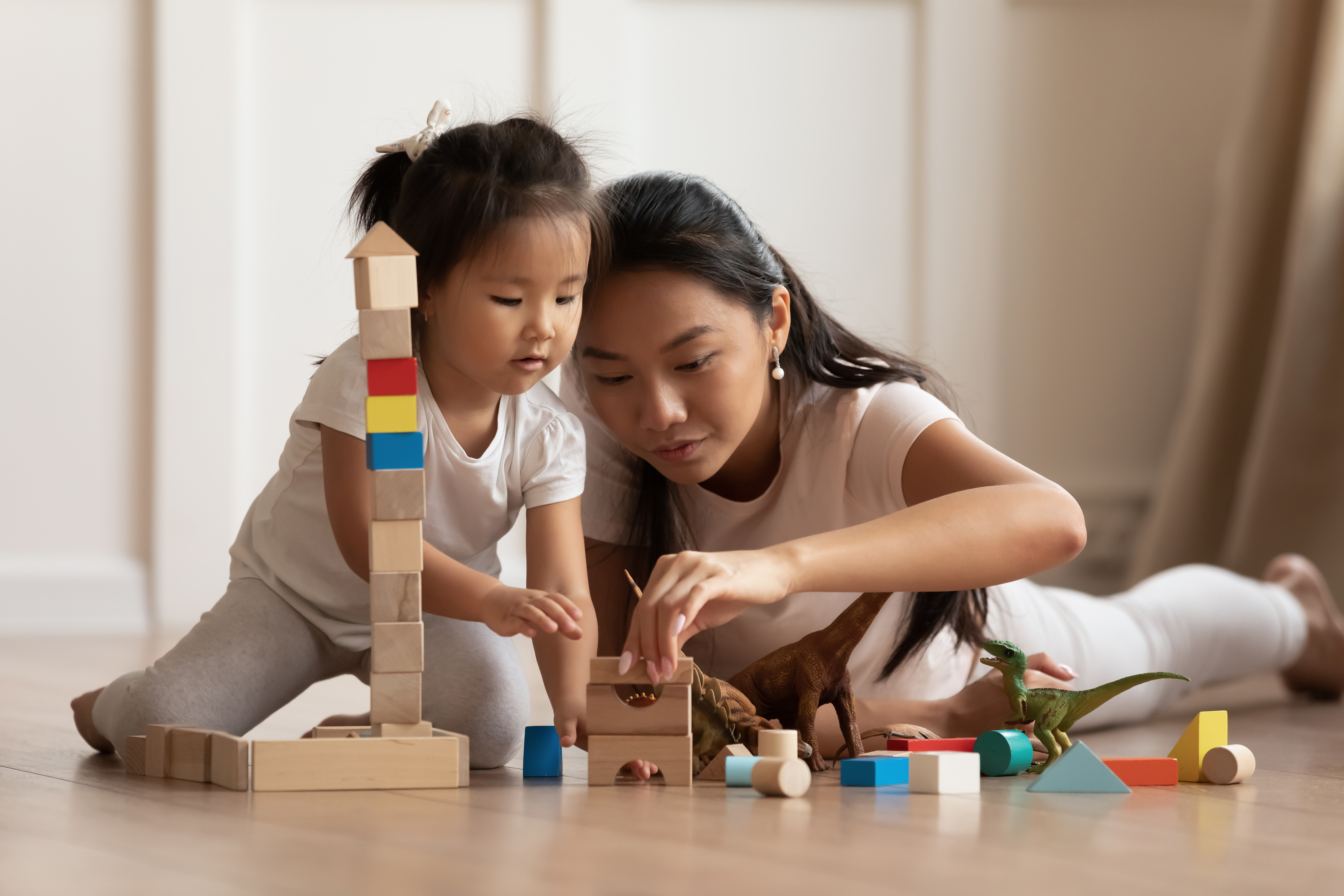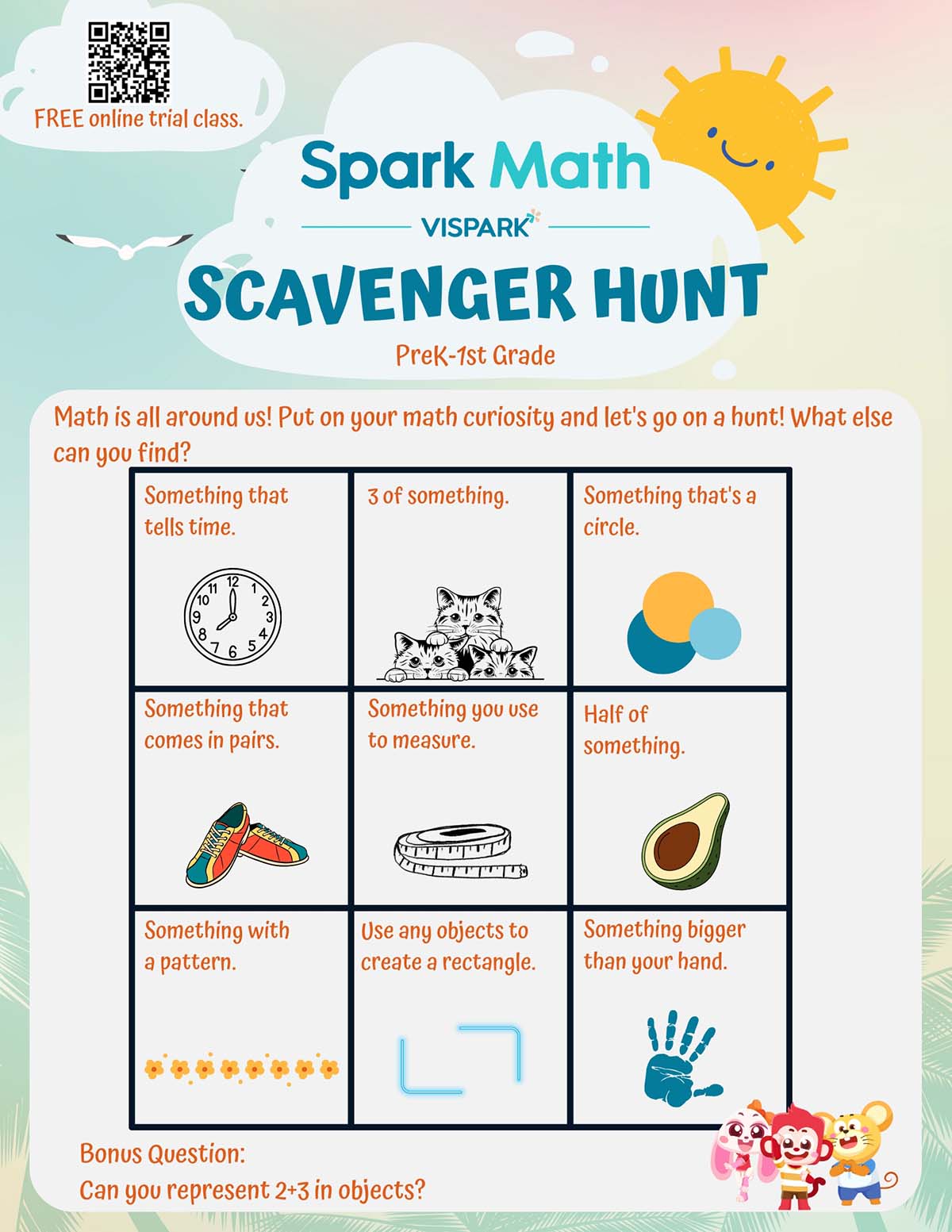
Looking for a fun activity for your kids where learning can feel like play? Here’s something that exercises the mind and body, develops understanding skills, and continues math learning outside the classroom. Check out this Spark Math scavenger hunt, perfect for kids from Pre-K to 1st Grade.
Math is around us everyday and everywhere. There’s no better way for kids to learn than with fun and interactive activities. Finding fun ways for younger kids to interact with math is a great way to show the importance of numbers, shapes, time, and additional math concepts kids are exposed to in both school and in life. Here’s a Spark Math scavenger hunt that you can do almost anywhere, perfect for a fun rainy day or summer activity!
The Spark Math Scavenger Hunt

What Concepts Does The Spark Math Scavenger Hunt Teach?
Counting
Number recognition and counting are some of the earliest math skills children learn. Find out how far your child can count, by using items around the house. There are a few ways to address counting using items around the house. One way to work on number recognition is to find a certain number of one object. Can your child bring you 3 pieces of fruit to share for lunch, or 2 stuffed animals for bedtime? This is a great way to make number recognition a part of their everyday life. If you want to work on counting, count things they enjoy. How many legos have to be put away? Help them count as they clean up. Scale how they count by challenging them to count by 2s, 5s & 10s as they are able.
Time Recognition
During their early education, children learn to read time to the closest hour and half hour, both on an analog and digital clocks. There are tons of ways to find time, using clocks around the house, or features on your phone. If you have both types of clocks, help kids compare the differences in reading time on both. Make sure to go over how to tell the difference between the hour and minute hand, AM and PM, and how time is part of their day. If there is a schedule your child follows (wake time, dinner time, bedtime etc.), show what time these events happen.
Shapes
Shapes are one of the first math concepts kids learn. Even before Pre-K, kids toys are built around simple shapes. Squares, triangles, rectangles and circles are the first shapes kids learn. In first grade students are introduced to 3D shapes like cubes and spheres. Kids should learn the different types of shapes and how those shapes can come in different sizes.
Matching Pairs
There is a reason why so many kid’s games are about matching the images, it helps build skills you don’t even realize you use everyday. Matching pairs helps develop memorization, concentration, understanding pattens and more. Matching pairs don’t always have to exactly the same like a pair of shoes. Match 2 playing cards of different colors but with the same number or building blocks with the same letters. This helps show that different objects can be paired with other items for what they have in common.
Measurement
Understanding the objects used to measure different information is a great way to introduce measurement to kids. In early education, pre-k and kindergarten, kids will learn concepts like longer, shorter, bigger or smaller. Using everyday items, kids can learn how to judge these concepts with just what they see and feel. As they get older, children learn how to use items like rulers and measuring tape. Cooking is a great way to use measurement with teaspoons, cups, and other parts of your favorite recipes. Measurement is a major aspect of not only math, but all the STEM subjects, so an early introduction helps build a foundation of this knowledge.
Understanding Ratio/Half
Ratios and halves are a great way to use real objects and shapes to introduce fractions and what makes up a whole object. In early education children learn about what it means to have half of something. Using an item like a sandwich, is a great way to show how something can be cut into 2 equal parts, or in half. From learning what a half is, we can cut those pieces again and create quarters. This is an easy, interactive, and delicious way for younger kids to start learning and understanding the concept of fractions.
Recognizing Patterns
Recognizing patterns speaks to an important skill used in math and life, problem solving. Understanding what patterns are, a series of things that repeat in a way that makes sense, helps children understand the consistency. For many children learning and practicing patterns can be soothing. Once children feel comfortable understanding what can come next based on a pattern, they start working on their ability to solve problems based on what they have observed. You can have your child practice this skill by creating their own pattern with objects like crayons and pencils.
Creating and Recognizing Shapes
Understanding different shapes is an important part of early childhood learning. Learning how to use those shapes to build new things are an important part of problem solving and building creativity. Building new shapes out of other shapes helps to explain many concepts. What shapes do you get when you put two squared side by side?, or if you cut a square from corner to corner? While this may seem like simple play, creating shapes in a 2D and 3D space, is the beginning of foundational learning practices of architecture, programming, and so many more STEM based skills.
Creating Simple Math Equations
Using everyday items such as building blocks to explain the key concept of addition and subtraction helps children develop concrete skills. Using physical items to help children build foundational knowledge about more abstract concepts is the beginning of doing mental math and growing a true understanding of how math works. Using real items kids are set to create their own equations which is the beginning of a bigger journey!
Have family fun with this Spark Math scavenger hunt! Using math in the real world makes it more accessible for children and shows how math is part of everyday life. Spark Math uses the CPA Method (Concrete, Pictorial Abstract) method when teaching math concepts.
Check out more fun ways your kids will love with a Scavenger hunt for kids between 2nd and 5th grade and this blog about the top games that use math. Looking for gamified math lessons led by live teachers? Spark Math by Spark Education is the place for you. Schedule a FREE trial class today!




